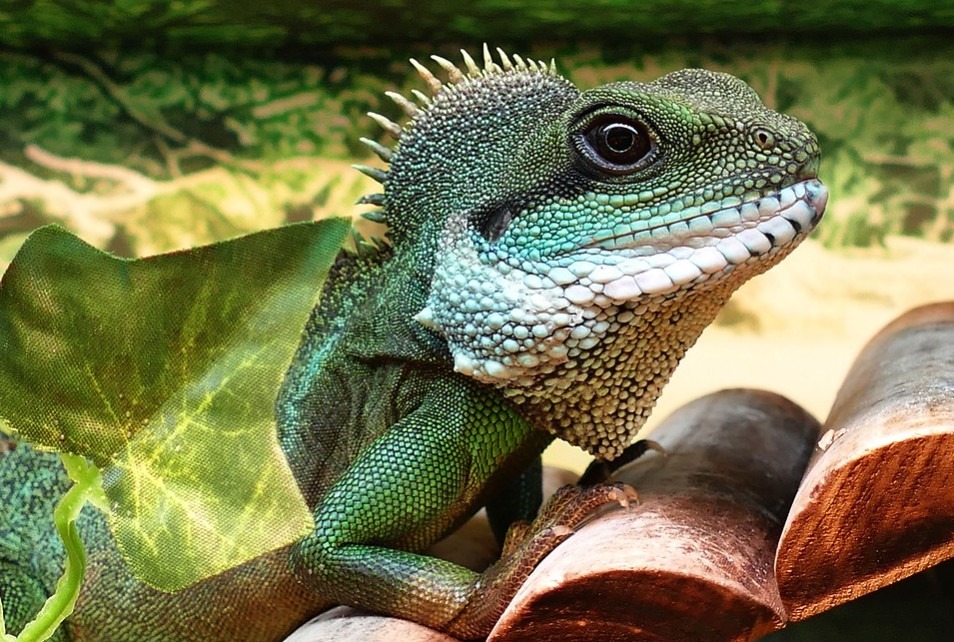The Chinese Water Dragon, also known as Asian Water Dragon, Thai Water Dragon, Green Water Dragon, and Physignathus cocincinus, is an agamid lizard endemic to mainland Southeast Asia and China. This exotic reptile resembles a small iguana and has specific care needs, which is why they require care from intermediate to expert hobbyists.
If you want to find out more about the Chinese Water Dragon, make sure to read further!
History
Chinese Water Dragons originate from mainland Southeast Asia, particularly in Thailand, Vietnam, southern China, and Cambodia. Majority of the Chinese Water Dragons that are being sold are wild-caught individuals that were exported to the United States to be taken care of as pets. Wild-caught Chinese Water Dragons are usually unhealthy, plagued with intestinal parasites, and may need anti-parasitic treatments to become healthy again. They typically have open wounds and scars on their faces. A small number of captive-born water dragons are also available from professional reptile breeders. They are more expensive than wild-caught because they are healthier.
Characteristics of a Chinese Water Dragon
Average life span: 10 to 15 years
Average length: 2 to 3 feet
An adult Chinese Water Dragon has a dark or light mint green body. Its lower body is generally very light yellow or white with vertical stripes that exist along the sides of its body. These stripes are either mint green, aqua, pale green, or turquoise in color. Its throat can be vibrant, ranging from colors pale yellow, peach, orange, fuchsia, bright pink, and dark purple. It possesses a long tail with green and brown bands. An adult male Chinese Water Dragon has a larger head than a female, and they develop larger crests at the back of its neck and head.
Meanwhile, a juvenile Chinese Water Dragon has brownish-green upper surfaces and pale green to white lower abdominal areas. Subtle, light-colored stripes are present on the sides of its body.
When it comes to behavior and temperament, Chinese Water Dragons are one of the friendliest reptiles. They enjoy being handled. In fact, they need to be regularly handled to keep them calm and less aggressive. If threatened, it may bite or whip its tail. As social reptiles, they are active in their environment. They tend to enjoy captivity with a pair or in a group.
Caring for a Chinese Water Dragon
Chinese Water Dragons are arboreal lizards, meaning they love to climb on branches, rocks, and trees. One or more adult lizards require an enclosure that measures 6 feet tall, 3 to 4 deep, and 4 to 6 feet long. It’s essential to remember that Chinese Water Dragons have a hard time understanding the concept of glass, which is why you will often see your pet/s rubbing their snouts on the enclosure’s glass walls. To avoid damaging their noses and jaws, a better alternative is to find a large screen enclosure. You can also tape a visual barrier (cardboard or paper) around the enclosure’s bottom.
When it comes to choosing the best substrate, find something that can increase cage humidity. Cypress mulch is a great choice, as it allows the Chinese Water Dragon to dig and increase the environment’s humidity. Sphagnum moss works well, too. Steer clear of substrates with coconut husk as this can cause eye irritation and infections. Your pet would require a water bowl filled with clean water. Make sure it is large and deep enough so your pet can submerge at least half its height.
Ambient daylight temperatures should be between 84 and 88 degrees Fahrenheit, with a basking spot that reaches 90 degrees Fahrenheit. At night, set up the temperature between 75 and 80 degrees Fahrenheit. There should be a temperature gradient—you can achieve this by providing basking light, under tank heat pads, ceramic heat element, and heat tape. You can also provide UVA/UVB light bulb to provide vitamin D to keep the lizard’s bones healthy.
Your Chinese Water Dragon/s will require mealworms, dragon crickets, earthworms, waxworms, butter worms, locusts, and small feeder fish. Adults can be supplied with pinkie mice and kingworms occasionally. Remember that all insect prey should be gut loaded. Finely chopped fruits and vegetables such as green beans, carrots, orange squash mangoes, strawberries, papaya, and sweet potatoes can be provided occasionally. Fruits should be given in small quantities than vegetables.

